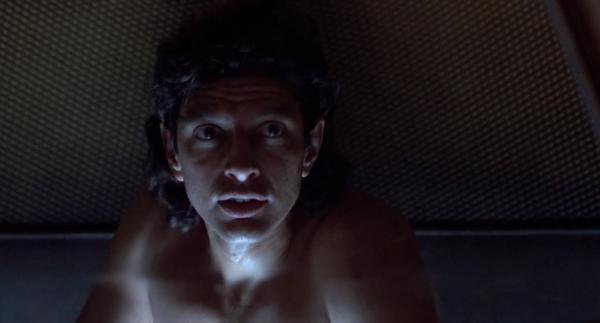5 Must See Canadian Horror Films

With Halloween just days away, it’s time to settle in for some cold nights and some good horror. While you can never quite go wrong with classics of the genre, whether Universal monsters, 80s slasher or contemporary torture porn, part of fear and part of horror is diving into the unknown. While Canadian cinema does not have a particularly strong reputation in the minds of its citizens, Canada has always had a flair for genre cinema and horror in particular. Maybe it’s the history of surviving the unknown and often frightening elements, as well as the detached sense of dislocated identity associated with being so close to United States. Whatever the reason, Canada has some of the most cutting edge horror filmmakers the world has to offer. Here is a selection of just five great horror films well worth checking out this Halloween season.

Ginger Snaps (2000)
Directed by John Fawcett
Horror has always had a bad reputation in terms of its representation of women. While the genre has always featured its share of female protagonists, it is often tainted with an almost Victorian sense of gender conventions and a desire to transform female sexuality into a monstrous being. The 2000 werewolf film, Ginger Snaps, spins all these assumptions on their head. Set in small town Ontario, the film is about two outcast sisters who dread nothing more than normality. Quite literally a period piece, the film explores with dark humour and deft insight into gender conventions Ginger’s transformation into a werewolf, which just so happens to coincide with her first menstruation. As Ginger grows increasingly aggressive and monstrous, she drifts further away from her younger sister who just wants to save her from the “curse”. The film is as funny as it is shocking, and features some of the most vibrant and perverse dialogue in any horror film. The movie has a real tap on the horrors of high school, and suggests with real intimacy the alienation and insecurity that dominates adolescence. One of the very best werewolf movies out there, Ginger Snaps is a great change of pace to the more mindless entries in the horror genre.

The Fly
Directed by David Cronenberg
Forcing myself to choose just a single David Cronenberg film is a struggle befitting of Sisyphus and his boulder. Perhaps the greatest filmmaker Canada has to offer, Cronenberg uses horror to explore psychology and social concerns. Even in his earliest work, there is a real sense of realism and nuance to his style. While personal preferences lean me more heavily towards his most sexually dense work like Dead Ringers and Crash, there is no mistaking the impact and importance The Fly. Starring Jeff Goldblum and Geena Davis, the movie is a remake of a science-fiction film from the 1950s of a scientist whose failed experiment leads his DNA to be mixed with that of a fly. Goldblum is incredible in the lead role, and as he transforms from neurotic dweeb into hyper-masculine monster the movie becomes increasingly tense and inhuman. Cronenberg’s emotionally detached style allows for the intimacy of the human body to come to the forefront of his craft. One of the integral pioneers of body horror, the film explores exactly what it means to be human and uses some of the most realistic and textured special effects in film history.

Black Christmas
Directed by Bob Clark
Perhaps the first masterpiece of Canadian horror, the conventions and style of Black Christmas are way more famous than the film itself. One of the truly great slashers, Black Christmas truly exploits the cold and thankless Canadian landscape in order to translate a powerful sense of dread. While this film does not feature any particularly horrific displays of violence or gore, few films in the history of filmmaking have been able to create such a powerfully dark portrait of life and death. While John Carpenter’s more famous film, Halloween, suggested an almost mythic vision of the sociopath which seemed imbued with an uncomfortable adolescent mortality, death in Black Christmas is truly random and senseless. The film seems to suggest the fleeting nature of life, and in particular, the fragility of the human form as it slowly picks off vibrant and intelligent inhabitants of an Ontario sorority house. Black Christmas does not offer comfort or resolution, and is an exemplary film in Canadian survivalist themes.

Antiviral
Directed by Brandon Cronenberg
Brandon Cronenberg is David’s son, and in the tradition of his father created one of the most startling body horror films of the new century. Antiviral tackles the perverse obsession with celebrity to new extremes, exploring a not so distant future in which people literally consume meat grown from the cells of their favourite celebrities and go to clinics in order to be infected with the same strain of STIs as the stars. While obviously teetering on the absurd, the movie has a refreshingly cynical style that allows images and scenarios speak for themselves. While the film has a wink of dark humour, it hits on points that are a little too close to home to be purely comical as it taps into our obsession with the physical form. With a clinical eye, the film beautifully evokes a contemporary sense of alienation as virtue is replaced with physical perfection.

Pontypool
Directed by Bruce McDonald
The recent premiere of The Walking Dead was the highest rated episode of the series so far. In spite of the apparent over-saturation of zombies in contemporary culture, there clearly remains an interest and a fascination with the walking dead. Zombies, as we know them, only date back to the late 1960s when George A. Romero changed in the horror genre forever with his film The Night of the Living Dead. While zombies predate Romero, earlier incarnations were not the undead flesh eating monsters we know today, but a part of voodoo folklore referring to a corpse animated by witchcraft to do its masters bidding. Recent years have seemed another re-invention of the genre, forgoing the element of the ‘living dead’ and playing on fears of another devastating pandemic, zombism became a virus called rage in the ‘28 Days’ series. Another small Canadian film, Pontypool, sought to change our understanding of zombies by changing the means by which the virus is spread. Taking full advantage of the alienation of a winter storm, the film is set at a small radio station in the middle of nowhere. When suddenly people become infected with a strange zombie virus, the isolated group led by Stephen McHattie search for the cause. Innovative, energetic and mysterious, this film will please those burned out with the undead as much as its fanatics.



